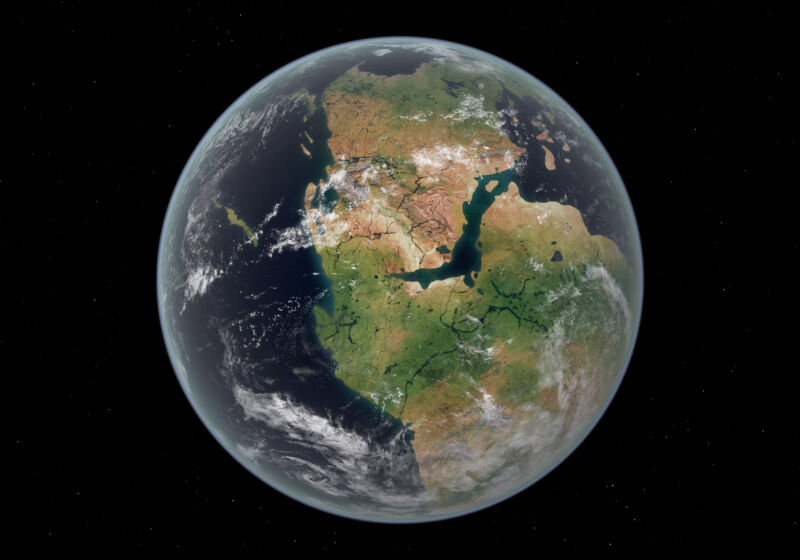
Global temperature records go back less than two centuries. But that doesn’t mean we have no idea what the world was doing before we started building thermometers. There are various things—tree rings, isotope ratios, and more—that register temperatures in the past. Using these temperature proxies, we’ve managed to reconstruct thousands of years of our planet’s climate.
But going back further is difficult. Fewer proxies get preserved over longer times, and samples get rarer. By the time we go back past a million years, it’s difficult to find enough proxies from around the globe and the same time period to reconstruct a global temperature. There are a few exceptions, like the Paleocene-Eocene Thermal Maximum (PETM), a burst of sudden warming about 55 million years ago, but few events that old are nearly as well understood.
Now, researchers have used a combination of proxy records and climate models to reconstruct the Earth’s climate for the last half-billion years, providing a global record of temperatures stretching all the way back to near the Cambrian explosion of complex life. The record shows that, with one apparent exception, carbon dioxide and global temperatures have been tightly linked. Which is somewhat surprising, given the other changes the Earth has experienced over this time.
Past climates
The work done here by an international team involves a combination of proxy data and climate models. While there are a number of land-based proxies, they tend to come with very large uncertainties. So, the researchers focused on a single type of proxy: the ratio of oxygen isotopes found in the shells of sea organisms. There are some questions regarding the accuracy of these, as using them requires that the ratio of these isotopes in the oceans has remained constant over time.
To compensate for that, the researchers used two methods of converting these proxies into temperatures. One method assumed that oxygen isotope ratios in seawater have remained constant; the second method used a slow, constant change over the time period covered.
Climate models provide a way of converting these proxies, which typically come from a single geographic location, to a global temperature. By using details like the continental configuration and carbon dioxide levels, the models can estimate which reasonable global temperatures are consistent with the proxy data, meaning a specific temperature at a specific location on the globe. The researchers used an ensemble of climate models so that the results weren’t dependent on any particular implementation of atmospheric physics.
The results, which the researchers call PhanDA, estimate global temperatures over the last 485 million years, going back to the end of the Cambrian, the period that saw the diversification of the major groups of present-day animal life.
So, what does PhanDA look like? One key feature is that it overlaps with the Cenozoic, which started with the mass extinction that ended all non-avian dinosaur lineages. We’ve got a better history of the Cenozoic climates, so these provide an important test of whether PhanDA’s temperatures match those obtained independently. The consistency between them is an important validation of the new work.
Overall, the researchers find that the global mean temperature has likely varied from a low of about 11° C, seen in the recent glacial periods, up to a high of 36° C, seen about 90 million years ago, though similar extremes were seen during the PETM. Other major climate events, such as the warming produced in the wake of the eruptions that formed the Siberian Traps, showed up in the record. There are both long periods of warming trends (such as one that covered most of the Mesozoic) alternating with cooling (which has dominated the present Cenozoic). The researchers suggest these are driven by the assembly and breakup of supercontinents.
More of this period was spent in warm greenhouse climates (41 percent of the period) than in icehouse climates (31 percent). The researchers found that most of the difference between these climates occur in the polar regions. Changes do occur in the tropics, but they’re considerably smaller in magnitude. So, during an icehouse period, the difference between equatorial regions and high latitudes is on the order of 30° to 50° C. By contrast, during hothouse periods, the equator-to-pole difference tended to be on the order of 15° to 25° C.




















+ There are no comments
Add yours